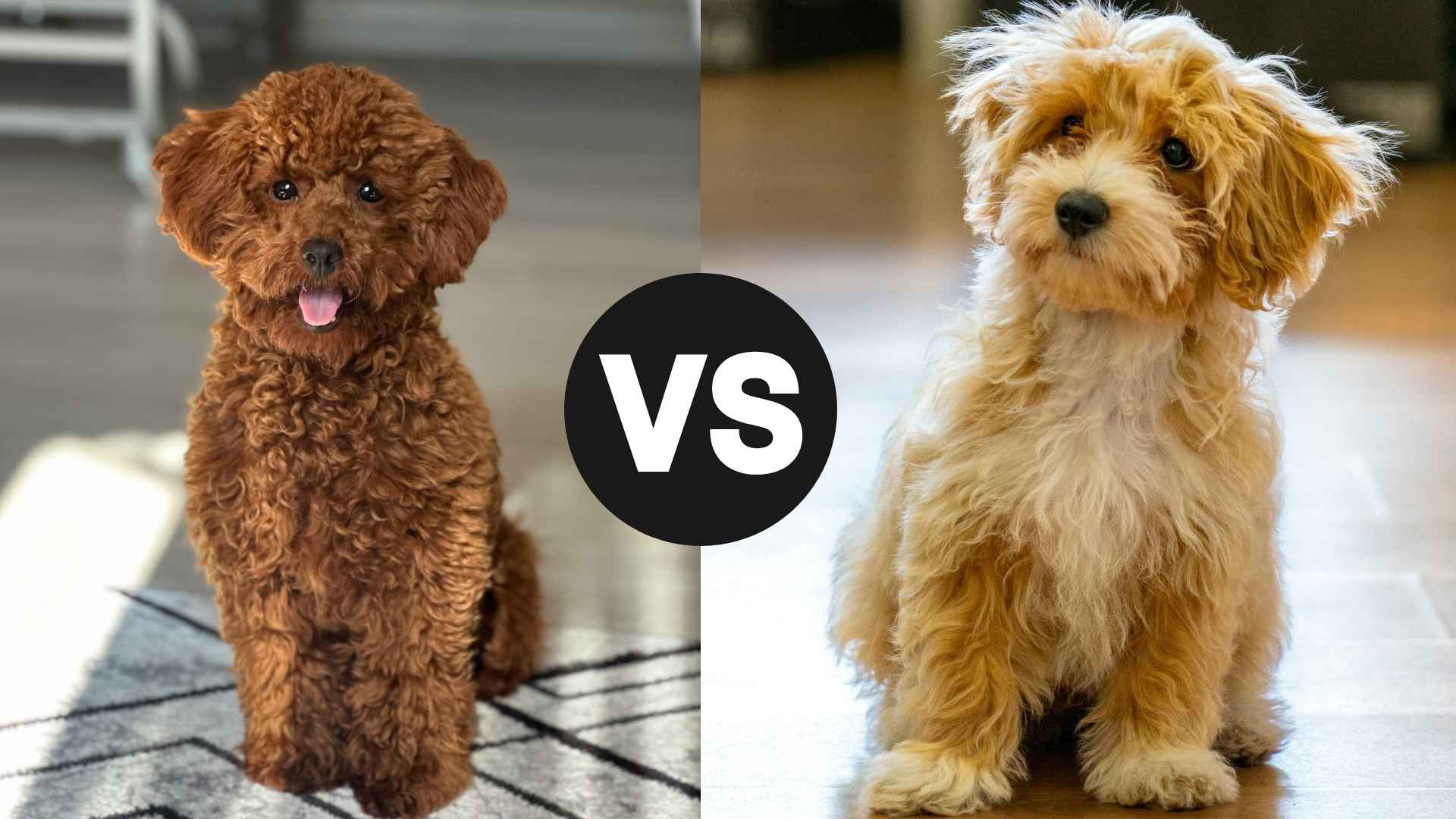When it comes to choosing the perfect small dog, the Toy Poodle and Maltipoo are two popular breeds that often steal the spotlight. Both are irresistibly cute, intelligent, and friendly, making them great companions for families and individuals alike. But how do they stack up against each other?
Whether you’re drawn to the classic elegance of the Toy Poodle or the adorable mix of the Maltipoo, understanding the differences between the two can help you make a more informed decision. From their personalities and grooming needs to their health and exercise requirements, we’ll dive into what sets these two breeds apart.
So, if you’re debating between a Toy Poodle and a Maltipoo, keep reading to find out which one might be the best fit for your home and lifestyle!
Toy Poodle vs. Maltipoo
The Toy Poodle is a smaller version of the Standard Poodle, originally bred in Germany as a water retriever before becoming a fashionable companion dog for French nobility. Known for their intelligence and versatility, Toy Poodles have been used in a variety of roles, from circus performers to truffle hunters. Their signature curly coat is hypoallergenic, making them a great choice for those with allergies.

Toy Poodles are confident, energetic, and independent, often enjoying activities that engage their sharp minds. They may require a bit more grooming due to their dense, curly fur, but with proper care, their elegant appearance and endearing personality make them a sought-after breed.
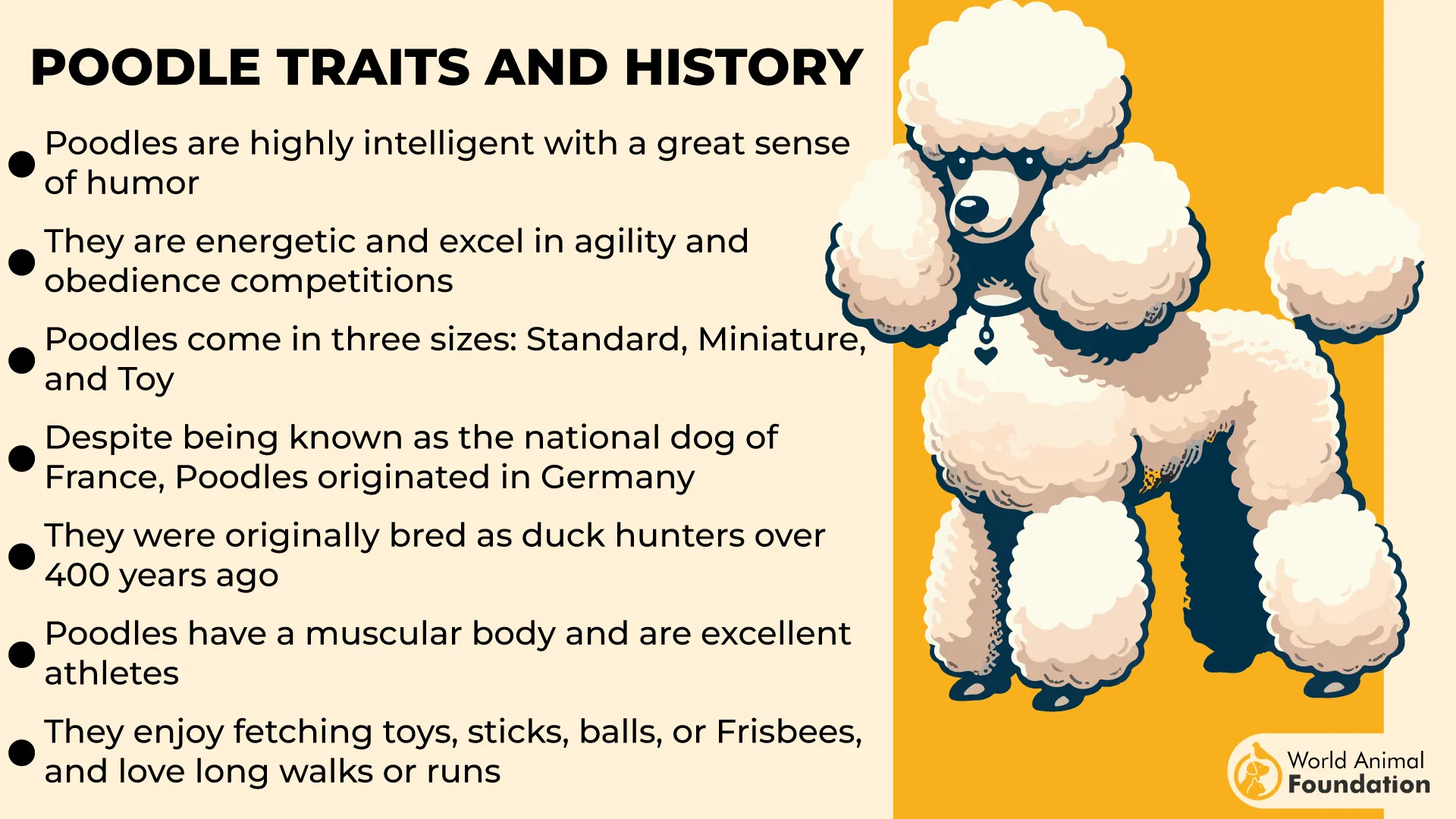
As noted by Hillspet, the Maltipoo, a designer dog, a cross-breed, and a lovable mix of Miniature Poodle and Maltese traits. This breed was intentionally created to combine the affectionate nature of the Maltese with the intelligence and hypoallergenic coat of the Toy Poodle. Maltipoos are known for their gentle and loving demeanor, often forming strong bonds with their owners.

They are generally more laid-back than Toy Poodles, making them a perfect fit for families or individuals seeking a cuddly companion. While their soft, wavy coats are also hypoallergenic, they are typically easier to maintain than the Toy Poodle’s thicker fur. Maltipoos thrive on attention and are well-suited to those who enjoy a friendly, interactive pet.
Toy Poodle vs. Maltipoo: Physical Features
When it comes to physical features, the Toy Poodle and Maltipoo each bring their own unique charm. The Toy Poodle is a compact and elegant dog, standing between 9 to 10 inches tall at the shoulder and weighing around 4 to 6 pounds. Their coat is one of their most distinguishing features—dense, curly, and often groomed into various styles.
The Toy Poodle’s coat comes in a wide range of colors, including white, black, brown, apricot, and cream, adding to their versatile appearance. Their build is athletic, with a square, balanced frame that reflects their energetic nature. They have long, graceful ears and a proud expression, which contributes to their overall refined look.

The Maltipoo, being a hybrid of the Maltese and Toy Poodle, inherits a blend of physical traits from both parents. Typically, they stand around 8 to 14 inches tall and weigh between 5 to 20 pounds, depending on their genetic makeup. Their coats are soft, wavy, and often described as fluffy, with colors ranging from white, cream, and apricot to shades of gray or black.
Unlike the Toy Poodle’s more structured coat, the Maltipoo’s fur tends to have a more relaxed texture, although still hypoallergenic and low-shedding. The Maltipoo’s face is often rounder and softer, with dark, expressive eyes and a sweet, affectionate expression that makes them instantly lovable.
Toy Poodle vs. Maltipoo: Training Needs
When it comes to training, both the Toy Poodle and Maltipoo shine as highly intelligent dogs, making them relatively easy to train. AKC states this highly intelligent breed excels in obedience training and can quickly master new commands. Its keen mind makes it ideal for owners who are looking for a dog that can perform tricks or tasks with ease.
With consistent training and positive reinforcement, Poodles can excel in activities like agility or obedience competitions, and they tend to adapt well to various environments. They are also a good match for families or individuals who are willing to invest time in mental stimulation to keep their active minds engaged.
Similarly, the Maltipoo is also known for being highly trainable due to its Poodle heritage. While they share the Poodle’s intelligence, Maltipoos may require a bit more patience during training sessions, especially if they inherit the playful, stubborn nature of the Maltese parent. However, with the right guidance, they can become well-mannered companions.

Maltipoos tend to respond best to short, positive training sessions, especially when starting as puppies. They are often a good match for families with small children, as they are eager to please and learn. Training them early can help prevent common behavioral issues, ensuring they grow up to be well-behaved and well-adjusted dogs.
Toy Poodle vs. Maltipoo: Health and Maintenance
Poodle, being a purebred, is generally known for its robust health, but like many small breeds, it can be prone to certain genetic conditions. PetMD states they are prone to progressive retinal atrophy (PRA), which can lead to vision loss over time, and dental problems, as their small mouths often cause overcrowded teeth that require regular cleaning.

Another issue is runny eyes, which can be managed with routine care and cleaning. A reputable breeder will often health test their breeding dogs, reducing the chances of inherited issues. Regular veterinary checkups, proper nutrition, and daily walks are essential to keeping them healthy and ensuring they stay in peak condition throughout their lives.
The Maltipoo, as a mixed breed, may inherit health traits from both its Maltese and Poodle parents. This hybrid dog is generally known to have fewer health issues than some other breeds, but they are not immune to potential health concerns.
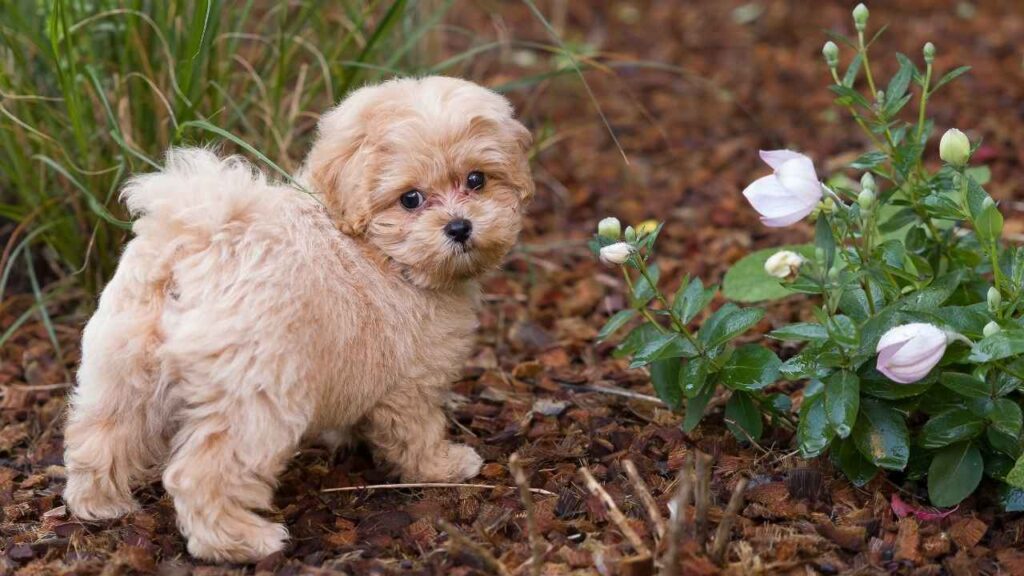
PetMD states that Maltipoo may also be susceptible to Patellar luxation, shaker syndrome, and epilepsy. Additionally, Maltipoos can be prone to separation anxiety, which may impact their overall well-being.
Health testing is particularly important for this crossbreed to ensure that both parent dogs are free from genetic disorders. Regular veterinary visits, a balanced diet, and preventative care are key to ensuring the Maltipoo remains in optimal health.
Toy Poodle vs. Maltipoo: Life Expectancy
When considering the life expectancy of a Toy Poodle vs a Maltipoo, both breeds typically enjoy long lifespans compared to many other dog breeds. Toy Poodles, as a purebred dog, generally live between 12 to 15 years, with proper care and attention.
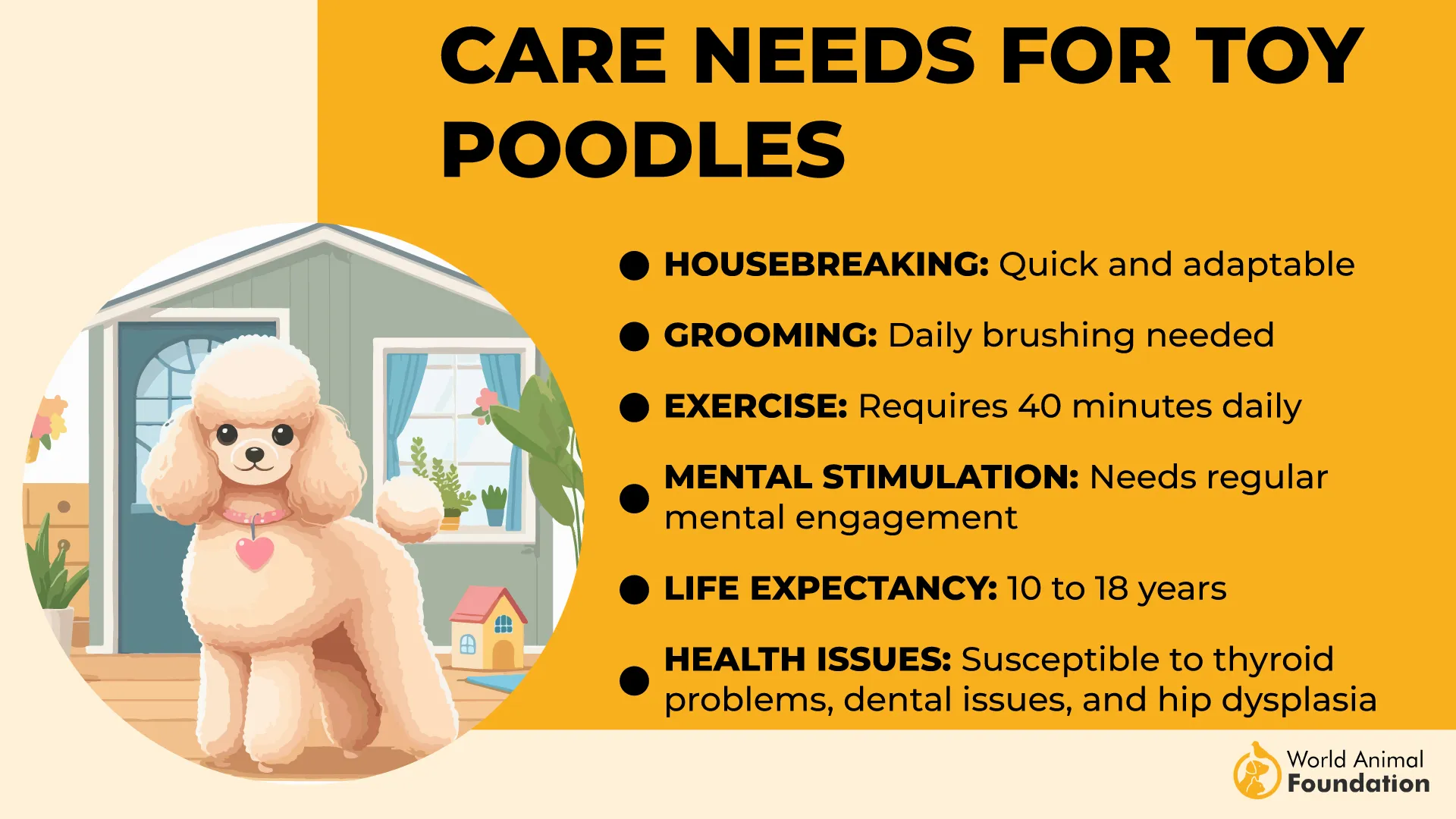
Their small size and active lifestyle contribute to their longevity, and with regular health checkups, they can lead long, healthy lives. However, they are still prone to certain health problems that may affect their lifespan, such as dental issues or eye conditions, so regular veterinary visits are important.
On the other hand, the Maltipoo, a poodle mix, benefits from the hybrid vigor seen in many mixed-breed dogs, which can result in fewer hereditary health issues compared to their purebred counterparts. This breed typically has a life expectancy of 12 to 14 years, though their longevity can depend on factors like the Maltese genes they inherit and overall health management.
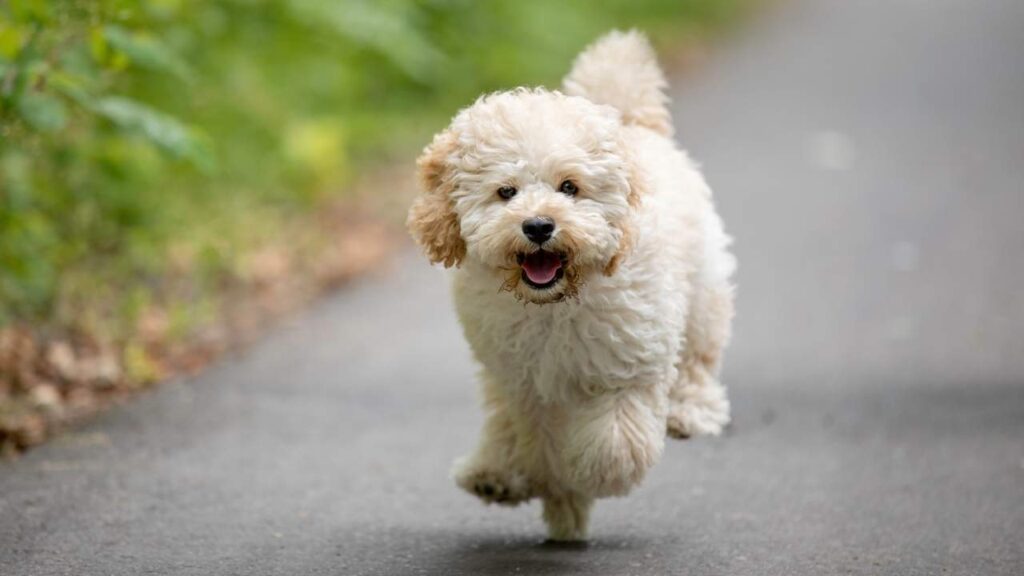
Maltipoos are generally a healthy breed, but like any dog, they can face health concerns, especially if not sourced from reputable maltipoo breeders who perform DNA testing to screen for genetic conditions. Proper nutrition and regular veterinary care can help ensure a long and happy life for both of these amazing dogs.
Conclusion
When comparing Toy Poodles and Maltipoos, it all comes down to your lifestyle and what you’re looking for in a companion. Both of these toy breeds are intelligent, affectionate, and adaptable—great fits for families with kids, singles, or even homes with other pets like cats.
A Maltipoo puppy may not have the consistent appearance seen in purebreds shown in the show ring, but it has a unique charm. On the other hand, Miniature Poodles—despite their name—are slightly larger than Toys and are known for being the healthier dog option due to more regulated breeding.
Avoid sourcing your pup from puppy mills, where poor conditions can lead to health and behavioral issues. Instead, seek reputable breeders or consider adoption—you might just find a wonderful mutt waiting in a litter for a loving home.
Whether it’s for cuddles during long periods at home or learning tricks in exchange for treats, both breeds bond deeply with humans and make fantastic lifelong companions. You will surely find a devoted little friend by your side.


